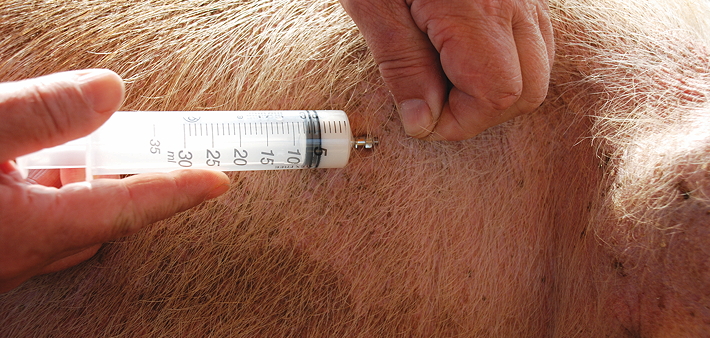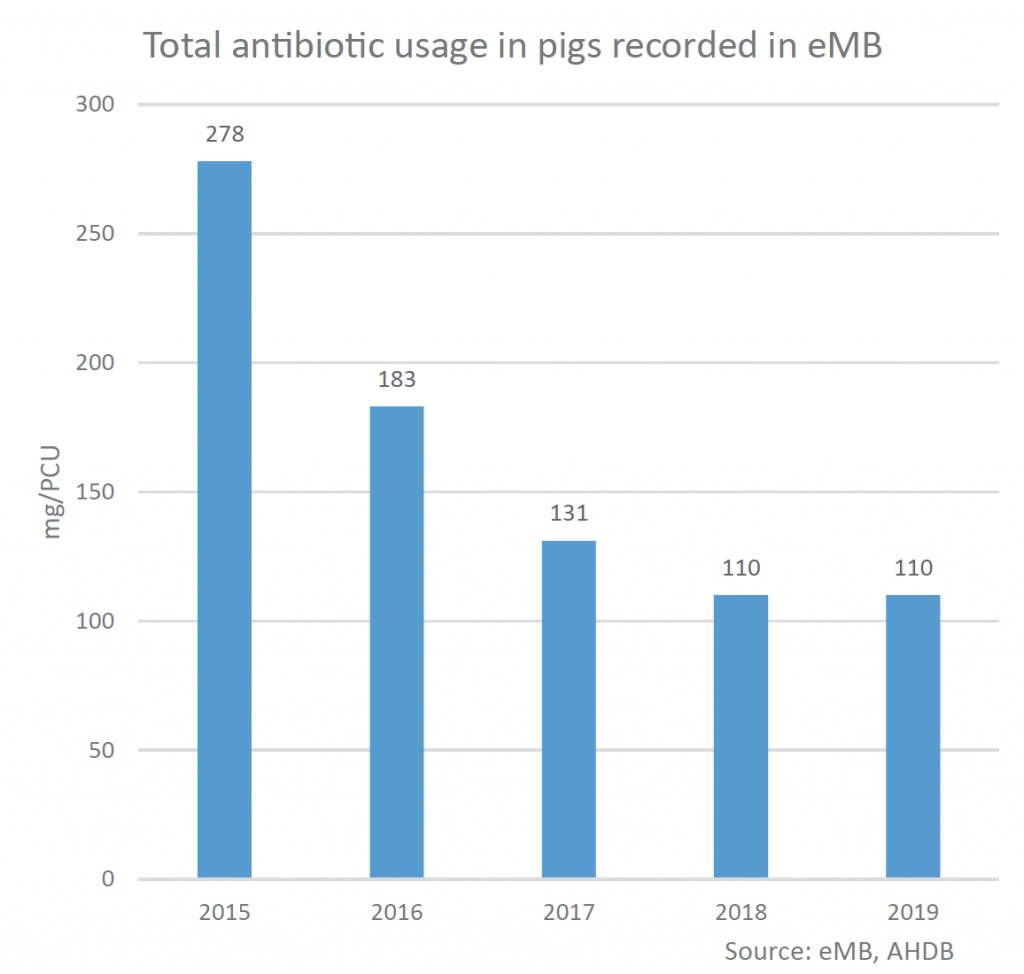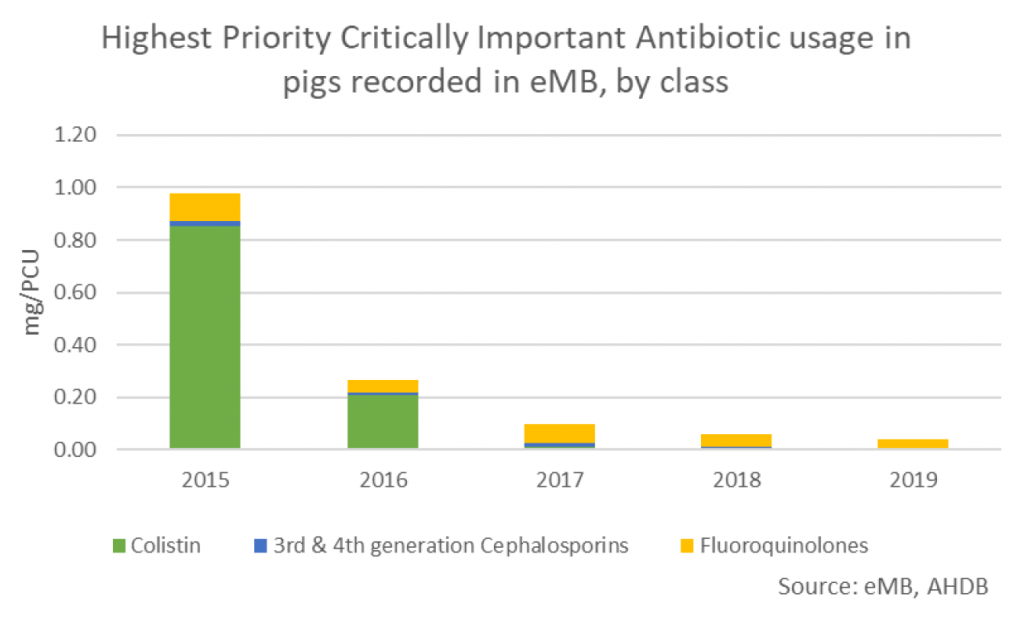Antibiotic usage in the UK pig sector remained unchanged in 2019, as a spike in swine dysentery cases led to increased usage on some farms.
Data from the electronic medicine book (eMB-Pigs), representing, 95% of pigs slaughtered in the UK, showed antibiotic usage held at 110 mg/PCU, having fallen by 60% in the three previous years. Despite, the end of this downward trend, the industry remains within touching distance of its 2020 target of 99mg/PCU.
Significantly, the use of highest priority critically important antibiotics (HP-CIAs) has seen a further decrease, down from 0.06 mg/PCU in 2018 to at 0.04 mg/PCU last year, with colistin accounting for a negligible 0.002 mg/PCU, compared with 0.004 mg/PCU in 2018.
AHDB’s acting head of animal health & welfare, Mandy Nevel, said: “The latest antibiotic usage data demonstrate the sustained efforts that pig producers and their vets are making to use antibiotics responsibly, despite challenges from disease.
“The holding pattern we are seeing at the moment is almost certainly due to a spike of swine dysentery cases in 2019. Swine dysentery is a bacterial disease and, while there are a number of actions that can prevent disease spread, treatment with antibiotics is sometimes both responsible and necessary to safeguard animal health and welfare.
“It is disappointing that this may have prevented further reduction in our antibiotic use last year. However, it is right that we put animal health and welfare first and, having discussed the results with the Pig Veterinary Society (PVS) and the wider industry, we can confirm that the consensus is the industry took the responsible approach and treated animals where necessary.”
With post-2020 antibiotic targets currently under discussion, Dr Nevel added that, despite three years of significant reductions, the industry will not be complacent about progress. “We and the industry will continue to do everything we can to improve the health of pigs and minimise the need to administer antibiotic treatments,” she said.
Richard Pearson, PVS senior vice president added: “AHDB’s eMB continues to be a hugely important resource, allowing us to review antibiotic usage at a farm and national level.
“Significant progress with antibiotic reduction has been made in the past few years and, as we achieve much lower levels of use, fluctuations in disease challenges can appear more dramatic in terms of the effect on usage. This is what we have seen in 2019, with significant swine dysentery challenges on some farms resulting in the need to treat pigs to protect their health and welfare.
“Our experiences during the past year highlight the importance of antibiotics and the continued drive for good stewardship. Pig vets and farmers remain committed to this, and confident that last year’s swine dysentery challenges can be overcome to achieve further progress with both healthy pigs and antibiotic reduction in the next few years.”
Professor Peter Borriello, chief executive officer of the Veterinary Medicines Directorate commend the UK pig industry for its ‘continued ambition to reduce the need to use antibiotics, and for their commitment to collecting and making public high quality data on antibiotic use in pigs’.
“One of the purposes of this kind of monitoring is as a tool to understand the impact that disease challenges have on antibiotic use, and to use this information to review and, when possible, further reduce the need for use of antibiotics through targeting endemic disease control. It is pleasing to see the already low use of high priority critically important antibiotics almost halved,” he said.
NPA chairman Richard Lister said the data demonstrated that producers, with their vets, had ‘responsibly managed the health, and welfare, of our pigs, which will always be our priority’.
“As we carry on planning the next phase of targets I know we are in a good place as a sector to continue to reduce our usage responsibly,” he said.






